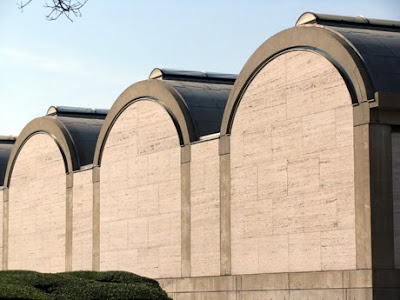
![]()

![]()

Two of the slabs eventually ended up at the Museo Geologico Giovanni Capellini in Bologna, where they they sat undisturbed until 2009 when paleontologists Federico Fanti and Andrea Cau studied them. They concluded that Leonardi’s crocodile was a new species and the oldest member of the Metriorhychidae, a diverse and curious group of marine crocodilians, which existed from about 171 to 136 mya. They were fierce, pelagic, piscivorous predators. Fanti and Cau named the new species Neptunidraco ammoniticus or “Neptune’s dragon from the Rosso Ammonitico Veronese Formation.”

Neptunidraco is the oldest known member of the Metriorhychidae group and did not look like any modern crocodile. They had streamlined skulls, a vertical tail, and a hydrodynamic body, all features well adapted to a marine lifestyle. Cau describes Neptune’s dragon as “more like a dolphin than a croc.” Based on their anatomy and teeth, they ate small, swift fishes. They may have ventured onto land to lay eggs. Later Metriorhynchids were more robust and could have eaten armored fish and large marine reptiles.

Rosso Ammonitico, also known as Verona Marble, is a Middle Jurassic age, generally reddish limestone rich in ammonites, hence the name. It formed in deep water as fine grained sediments settled into the Tethys Sea on the margin of Gondwanaland. The specific quarry was near Sant’Ambrogio di Valpolicella, about 10 miles northwest of Verona. (The fossil-rich slabs come from a more yellow part of the quarries, known as “ammonitico giallo.”) Used since Roman times, Rosso Ammonitico can be found at the Arena in Verona, the Battistero in Parma, the Palazzo Ducale in Venice, the Cathedral in Cremona, and the Galleria V. Emanuele in Milan. (On the VertePaleo list serv, the reporting of this story led to some amusing anti-limestone-countertop comments. When I was in Bloomington, Indiana, working on my chapter on the Salem Limestone, I remember seeing builders touting the limestone countertops of a new rental units. To each his/her own.)

The publication of the story apparently has ruffled a few feathers in Italy. On Andrea Cau’s blog, he notes that one famous Italian geologist offered critical comments on the discovery (saying it wasn’t truly a discovery since the fossil had been known since 1955) and the bigger implication that it provides a new understanding of the evolution of these intriguing marine crocodiles. Cau believes that the conflict results in part from a generational difference and a clash of paradigms, where the young upstarts are willing to reconsider, restudy, and reevaluate past concepts and specimens. He recognizes that their discovery does not change the world but it “is a beautiful piece of a huge mosaic called paleontology.” (Translation from Google Translator.)
Moreover, isn’t what Cau and Fanti did part of what makes science so appealing and such a valuable way to understand the world around us. We should applaud them for looking carefully, for struggling with understanding what they saw, for asking questions, for drawing new conclusions, and for learning from those who came before. And yes, their new discovery is a thing of beauty.